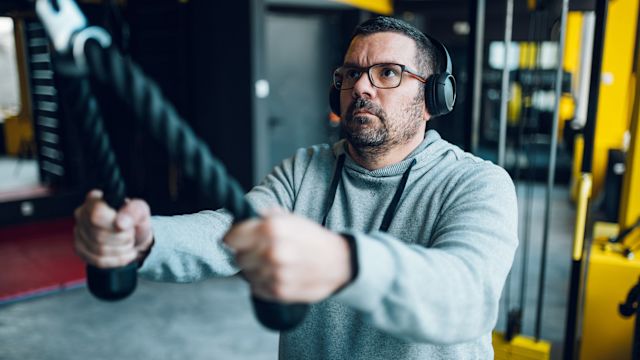Learning that you have prostate cancer or learning that prostate cancer has spread is life-altering news. Whatever you were planning for the next weeks or months, your health and your cancer treatment are now your top priorities.
There will be follow up tests and appointments with your healthcare team. There are treatment decisions to be made. There will be insurance paperwork and out-of-pocket costs. There will be the physical stress of going through treatment. And throughout all of this, there will be the mental stress of living with a serious illness.
In other words, this will be a period of your life where you are going to face multiple challenges. Making time to exercise will be one of the best things you can do for yourself during this time.
Here’s how exercise can benefit your physical and mental health if you’re living with prostate cancer.
Work with your healthcare team
Before getting started, a quick note: Think of exercise as a part of your treatment plan for prostate cancer and discuss exercise with your healthcare providers. This is especially true if you do not exercise regularly or if it has been a long time since you have exercised regularly.
But it’s also true for those who are exercising regularly or even intensely—because of the demands that prostate cancer treatment will place on the body, a person may need to change the type of exercise they do or the intensity and frequency.
Exercise to manage side effects
Hormone therapy is a frequently used treatment for prostate cancer, including advanced prostate cancer. Also called androgen deprivation therapy (ADT), hormone therapy works by lowering testosterone—a sex hormone that prostate cancer cells use to fuel growth and spread. Lowering testosterone shrinks prostate cancers.
ADT is used alongside other treatments that destroy cancer cells, such as radiation therapy or chemotherapy. ADT is very helpful in treating cancers that have spread, have come back, or have a high risk of spreading. It is also used to shrink tumors to smaller sizes that will make radiation therapy more effective. The choice of treatments will depend on multiple factors, including the stage of the cancer and the risk of the cancer growing and spreading.
While ADT is extremely useful in treating prostate cancer and improving outcomes for people living with prostate cancer, lowering testosterone levels will have unwanted impacts on the body—unwanted weight gain, loss of strength and muscle mass, insulin resistance, fatigue, bone loss, higher cholesterol levels.
Research has found that hormone therapies, like androgen deprivation therapy (ADT), may increase the risk of cardiovascular disease and type 2 diabetes. Lower testosterone levels are also associated with depression.
Managing these side effects is an important aspect of treatment, and exercise has been shown to be an effective strategy.
Aerobic exercise and strength training
Exercise falls into two broad categories—aerobic exercise and strength training. Ideally, an exercise routine will include a mix of both.
Activities like walking, running, and swimming are all good choices for aerobic exercise (cycling is not recommended, as sitting on a bike saddle puts unwanted pressure on the prostate). Aerobic exercise helps strengthen the cardiovascular system, can help lower the risk of diabetes, and can help a person maintain a healthy weight.
Strength training (or resistance training) includes activities like weight training (with free weights or weight machines), bodyweight exercises, and exercises with resistance bands. Strength training can help mitigate some of the side effects of treatment with ADT—it can help maintain muscle mass, muscle strength, and bone density, as well as help reduce body fat and improve metabolic health.
Both aerobic exercise and strength training are also associated with improved moods, lower psychological distress, and an overall better quality of life in people who have prostate cancer. These are important aspects of treatment and wellbeing. Depression and other mental health problems are prevalent among people who have prostate cancer. Exercise offers a way to feel more in control of your life and your body.






